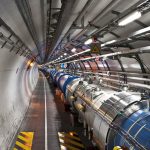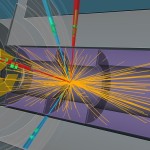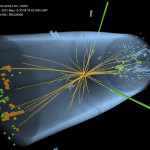Higgs boson
From Science News, Aug. 11, 2016: Particle physicists, including Fermilab Director Nigel Lockyer, scrutinize latest LHC results to refine knowledge of the Higgs boson’s properties.
The Higgs appeared in the second run of the LHC about twice as fast as it did in the first.
GeekWire, Jan. 6, 2016: The Higgs boson is the biggest find of the century in particle physics, but for the past few weeks, physicists at the Large Hadron Collider have been considering whether there’s a mystery that’s even bigger. Or at least more massive. Fermilab’s Don Lincoln is quoted in this article.
The CMS and ATLAS experiments combined forces to more precisely measure properties of the Higgs boson. Sticking with the philosophy that two experiments are better than one, scientists from the ATLAS and CMS collaborations presented combined measurements of other Higgs properties at the third annual Large Hadron Collider Physics Conference in St. Petersburg, Russia.
The Royal Swedish Academy of Sciences today awarded the Nobel Prize in physics to theorists Peter Higgs and Francois Englert to recognize their work developing the theory of what is now known as the Higgs field, which gives elementary particles mass. U.S. scientists played a significant role in advancing the theory and in discovering the particle that proves the existence of the Higgs field, the Higgs boson.







